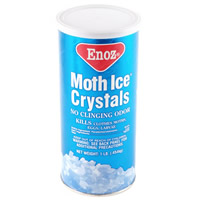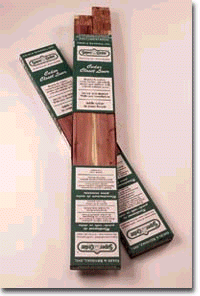
In the prior installment I described a “professional” tyer as “someone who ties flies an hour per day”, fun or profit being immaterial. This is the start of flytying season, complete with area closures, holiday madness, Egg Nog obsession, and bitter cold. Lots of folks will fit this category for the next six months, applying the lessons of last season to their arsenal of flies for next.
They’ll do so in cramped quarters, using whatever table or flat spot is available, hoping not to earn the wrath of their equally housebound spouse. Some have their own room, others attempt to remain inconspicuous in an overlooked corner in their apartment – all share the same issue; “real” jobs that limit tying to evenings where lighting, table height, and chair dictate how long they can tie without fatigue.
Storage and the actual tying infrastructure are as overlooked as scissor choice. Materials are expensive and they always seem to get first crack at the budget. Trying to keep an accumulation of materials bug free, out of reach of children or an inquisitive pooch, usually has your collection moving vertical. For them as are apartment bound, either dating or married, you’re in worse shape – as there are no out-of-the-way locations.
Gals do not appreciate dead stuff, you don’t want to explain why a rancid “bunny’s face” is featured prominently on the coffee table – not on the first date, as there will never be a second. If married, your spouse is a reluctant participant in your hobby, while tolerant – few things can strain a relationship more than a significant moth infestation, or the family pooch burping up a hairball of orange bucktail.
Bulk storage needs to address three issues; insects, space, and ease of use. It must proof you against insect loss, be attractive enough so that your spouse permits guests to see it, offer enough space to be effective, and it must be close enough to the tying area to make it functional.
Storage is two parts, the space available in or on your tying table, and extended space available in boxes, a chest, or closet.
 When a fly tyer is learning, he goes the cardboard box route; he’s tying on the kitchen table, so both he and his storage needs to be portable. After his first serious bug infestation the cardboard box is abandoned – he learns that if everything is in one box, it all gets eaten.
When a fly tyer is learning, he goes the cardboard box route; he’s tying on the kitchen table, so both he and his storage needs to be portable. After his first serious bug infestation the cardboard box is abandoned – he learns that if everything is in one box, it all gets eaten.
Next comes the “chemical” phase, where he pours mothballs into his storage area figuring his troubles are over. Armed insurrection results, as the spouse hates the odor, you hate the odor, and the family dog is now barfing up a potent chemical brew onto the rug.
Materials in contact with Mothballs or Crystals will retain the chemical on their surface, you’re tying at night and brush your eyes with the back of your hand, and now you are blinking toxic waste. Applied liberally, mothball odor will dominate an entire room and for an apartment dweller that’s not a recipe for domestic bliss.
After tying for 35 years, I haven’t figured it out either, the solution I have is multi-faceted and appears to have kept an uneasy peace on the domestic front.
I always have an eye open for old chests of drawers at garage sales, most are made of pine or better, and will refinish into something fairly attractive. Almost all of them are stained or painted, a quick glance at the interior of the drawer will identify the wood and its original color. The older the construction, the easier the finish comes off – as old lacquers become brittle and flake easily.
Line all the drawers with red cedar slats, available at any hardware store, sold as closet lining. Red cedar repels all the bugs, has a wonderful smell, and can be touched up with a belt sander every couple of years to restore the protection and aroma. Lay them loose on the bottom of each drawer, or you can tack them down with a little contact cement.
Apparently Madam approves as the frilly socks shown are not mine. This isn’t proof against a domestic dispute, she’ll question your sanity when you bring in the garage sale item – after it’s refinished, she’ll insist you promised it to her for her unmentionables.
Gals love the smell of cedar and you’ll have to defend your space aggressively. A smart fellow will realize this argument may be winnable, the “moth crystal eviction” argument is not.
 Always keep your materials in sealed bags. Incense (Red) cedar will ensure that nothing is disturbed, but why take the chance – especially with extended storage, where you’re not in it everyday to notice an issue. Bagging ensures all infestations are localized to a single bag rather than the entire drawer.
Always keep your materials in sealed bags. Incense (Red) cedar will ensure that nothing is disturbed, but why take the chance – especially with extended storage, where you’re not in it everyday to notice an issue. Bagging ensures all infestations are localized to a single bag rather than the entire drawer.
Fly shops have moths, lots of them. Quarantine all newly purchased items in a separate drawer for a couple of weeks. During the quarantine period avoid mixing them on top of other materials on your bench surface, moth eggs are tiny and they’ll shower onto anything like salt out of a salt shaker.
If you’re done for the year take your fly boxes out of your vest and add them to the bug protection, it’ll be six months before you wear the vest again, you don’t want any rude surprises on the eve of the season opener.
Scorched earth is the only policy on unbagged loose material, if the bugs get in the entire drawer should be thrown away. Synthetic materials will not be damaged, they’ll just harbor the eggs safely so that the infestation can be transmitted to other places. Dry your tears, and toss the entire supply.
The seams in the drawers will contain live eggs even when the drawer is empty, treat it as a quarantine area, and add only sealed bagged materials to that drawer initially. Give the cedar lining time to ferret out all the critters and cleanse the unseen areas.
Like I’ve said, I don’t have the answer – your storage needs are as big as your appetite, you can make do with a couple nicely refinished furniture items, it’ll keep you in Madam’s good graces (after she claims them), and will allow you to increase your addiction in a socially acceptable manner.
Technorati Tags: red cedar, fly tying storage, fly tying, domestic bliss

My philosophy is it is more likely that you’ll bring home an infestation to you when bringing home new materials rather than the bugs finding your stash of feathers. I wrote an article a while back on the detox process my stuff goes through at this link
http://www.hatchesmagazine.com/page/august2006/229
After I wrote that I found out about a product that works the same way as moth balls but with out the problems they come with. You can get it at wal mart or places like Home Depot. I can’t remember the name off the top of my head, but it comes in a square chunk. Kinda like a block of parafin wax. You can cut it into a few pieces to get more for your money and stick them in with your stuff. It works awesome.
I will do some digging, cedar works really well – but if there is something better I’m all for it.
Nice. Practical, handsome storage. I love home-made solutions. (to problems) Thanks for this one.
There are many things other than cedar that will work. Some of our junipers has much of the same natural insect repellent properties as cedar. Here in the US Northwest (Washington) we have several cedar like trees. Western Red Cedar is the most popularly known (Genus Thuja as in Thuja plicata). But there are a variety of other evergreen cedar-like trees that occur in another genus. Alaska Insense ‘Cedar’ is one though I do not recall the genus though it is not Thuja. My point is, if you are out in the woods in the northwest, find yourself an old cedar tree. The smell is distinctive with them all. And they like the valley bottoms along streams and rivers. There is still some old growth stands in places. And if you can find a downed one, you can get chunks of wood streamside or fresh sap, etc. The outer bark comes off in strips and may also work in this regard.
As I recall, native peoples used the cedar strip bark for skirts. One might even make a cedar strip coat to replace the one with fur you stripped off your spouses hide (aka, previous or later posting).
Uncle Ken
Forester, Ecologist and Fly Tyer
Ellensburg, WA
I have seen both red and incense cedar in hardware stores, but never Juniper. Perhaps a real wood supply is in order rather than the “big box” chain store. I’ll see if I can find something about Juniper on the Internet, it may be a function of harvest size, therefore not readily available unless you’re at a specialty wood yard.